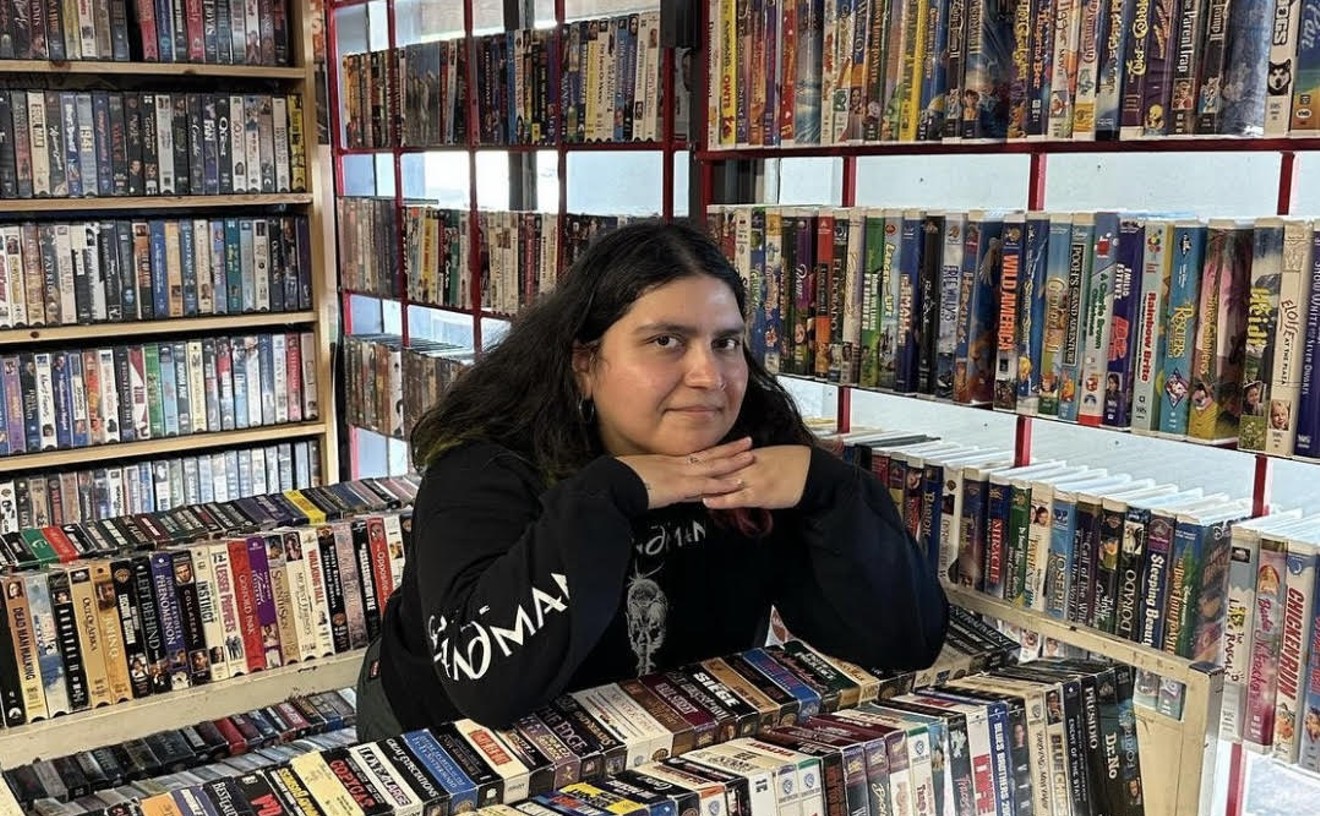On a blistering Saturday morning, a few runners peek into the doors of 521 E. Lawther Drive. They're halfway through a nine-mile jog around White Rock Lake and this unassuming cream colored building looks like it has a bathroom and air conditioning. But the Bath House Cultural Center also looks closed.
The Dallas cultural centers aren't places people usually wander into, curious to learn what's going on inside. Each building seems to serve a particular community and that community only, which can keep outsiders away. That's if they even know the centers exist in the first place.
There are four such buildings under the auspices of the Dallas Office of Cultural Affairs spread throughout the city: the Bath House, the Latino Cultural Center, the Oak Cliff Cultural Center and the South Dallas Cultural Center. Each fits into its neighborhood, bolstering the arts education in different ways. The staff of each center plans summer camps, after-school programs and art exhibitions.
"My approach was to give the Bath House audiences a wonderful variety of events both in the theater space and in the gallery," says Marty Van Kleeck, who left the Bath House after serving as manager for seven years. "The Bath House has very strong community support and a very loyal audience."
During her time at the center, Van Kleeck launched 130 Productions, a theater company named for its matinee shows. The community that Bath House serves is primarily older and white, although no one working for the Office of Cultural Affairs will put it that way. Ideally, the centers signal the city's support for the artistic output of the broad spectrum of residents. The city paid for a master plan study for an Asian-American Cultural Center in 2010 -- it hasn't been built -- but the centers are not meant to be exclusionary. Instead they serve and celebrate the tradition and the history of the city's communities.
"When I stepped into my position I felt like it was a crime that we weren't doing more outreach to our surrounding neighborhood," says Vicki Meek, who has managed the SDCC for 17 years. "So my education program is micro-focused on teaching African-American history to South Dallas children, and now I'm on my second generation of kids."
Meek is one of the devoted managers of the spaces, a job that she admits requires her to be a "workaholic." They are technically city employees and receive a budget to divvy up for education, community outreach or entertainment. For Meek, this was room to get creative. She made the shrewd move to join the National Performance Network, which allows the center to seek funds to commission works and bring in visiting artists. When it's time to raise funds, she calls on her contacts from years in the arts world as a gallery manager and artist. In the next year, the SDCC will host world premieres of works by Dallas-based playwright Jonathan Norton and choreographer Michelle Gibson.
"Rather than doing a bunch of little things here and there, I thought why don't we take a little money for at least two of these artists?" says Meek. "I wanted my legacy to be the support of these young artists. I could complain about what the Theater Center isn't doing, but that's not my style."
For all of the managers, there is a tricky balancing act of catering to the community that already exists and expanding the centers' horizons. Recently Meek invited Rafael Tamayo at the Oak Cliff Cultural Center to participate in artistic outreach programs at the juvenile detention centers, as the community he serves is primarily Latino. (Oak Cliff Cultural Center will celebrate its fourth anniversary on August 9, after taking over the space previously occupied by the Ice House Cultural Center, just next door to the Texas Theatre on Jefferson Boulevard. )
"It's important that young people recognize themselves in the art," Meek says. "We want to help the African-American and Latino kids know there is a way for express themselves."
With arts education continuing to be cut from schools, the centers play a more integral role in teaching Dallas kids the value of self-expression.
"The center is here for the community," says Benjamin Espino, manager of the Latino Cultural Center. "We have things like after-school programs in ceramics, musical theater, the arts and social demographics being what they are, we provide a great service because most of our programs are free or discounted in price."
Espino also prides himself on the LCC's combination of art shows and cultural education. Through August 30, the center hosts concurrent exhibitions of self-taught artist Ricardo Paniagua and a history-based show, Tex-Mex Kitchen of Dallas, 1950-1970, which documents the evolution of the Tex-Mex restaurant industry thanks to local contributions. And both exhibits fulfill the city's strategic plan by providing curriculum-based tours for school groups.
Of the four cultural centers, both the SDCC and the LCC are the buildings constructed specifically to be a center.
"When students tour Ricardo's exhibition, they learn principles of geometry," says Espino. "Plus, even just walking into the building, visitors encounter the work of a Mexican architect, Ricardo Legorreta and his son Victor."










